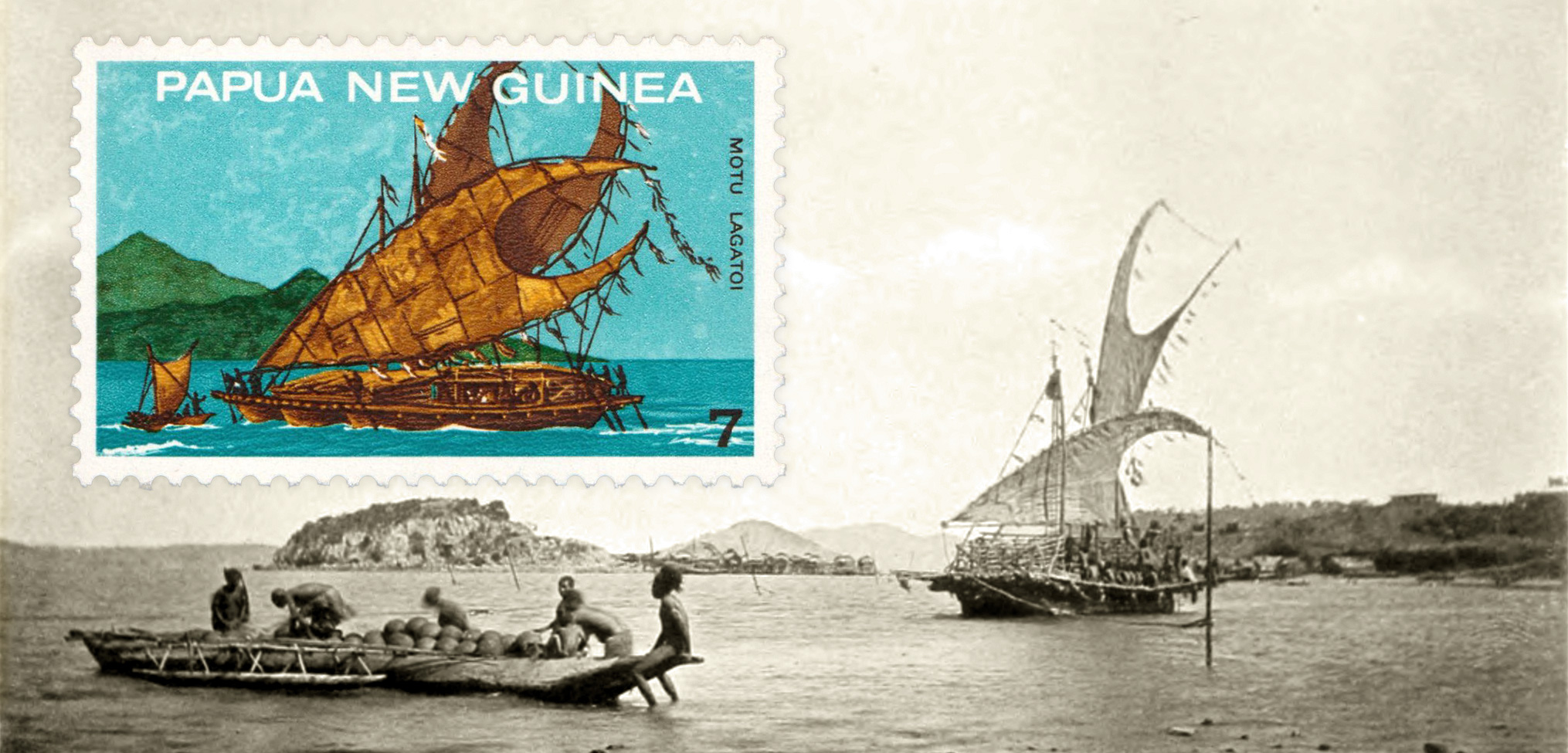Under the Crab-Claw Sails
When food was short, Pacific Island sailors loaded their boats with pottery and set off on long trading journeys in striking triple-hulled canoes.
Article body copy
Postage stamps are lessons in history, politics, science, or geography packed onto a small piece of gummed paper. They’re also beautiful works of art. In Stamped we’re going coastal, with postal.
Long ago, before British rule or the Australian rule that followed it, legend has it a humble Motu fisherman named Edai Siabo lived in the Papuan village of Boera. After an unsuccessful day and night of dugong and turtle fishing, he fell asleep on the gathered nets inside his canoe. An ancestral spirit yanked him out of the boat and pulled him into an underwater cave. There, the spirit showed him a vision of a three-hulled trading canoe with crab-claw-shaped sails called a lagatoi and instructed him to voyage north and bring back sago—the starch extracted from palm stems—to feed his village. Despite derision from his peers, Siabo built the boat and successfully completed the first trading mission to the Gulf of Papua. So began an 800-year-long seasonal tradition of exchange between the Motu and their distant trading partners down the coast, using lagatoi.
The Motu, traditional inhabitants of the land on which the present-day national capital Port Moresby stands, are an Austronesian people who made their living fishing, trading, and gardening. Motu territory falls in a rain shadow, and the growing season is unreliable. In years of local food shortage, when the wind blew from the northwest, they made the uniquely Papuan lagatoi from ilimo trees (Octomeles sumatrana) that they felled and hollowed out in the rainforest, then floated downstream to the estuary. They lashed together the logs into a layered hull, and the spaces in between served not only as protection from seawater breaches but also as storage space for cargo.
Motu women specialized in clay pottery. In each lagatoi, more than 1,000 pots and turtle-shell ornaments—wrapped in banana leaves—could sit on racks in the hulls waiting to be exchanged for 22 tonnes or more of sago and betel nut.
Five or six steersmen pulled oars, and when it came time for the lagatoi to come about, they would turn the sails around and switch ends, so that bow became stern. The crab-claw-shaped sails, made of plaited mats of palm-like pandanus leaves, were attached to the mast with three-ply rope made of twisted bark fiber. Sailors could also configure them to catch rainwater for drinking during the voyages, which could last for three or four months.
The trade cycle continued until the 1950s, when a lagatoi sank, killing many of its crew. Today, the ceremonial return of the lagatoi kicks off the country’s Independence Day celebrations in the capital each September.

